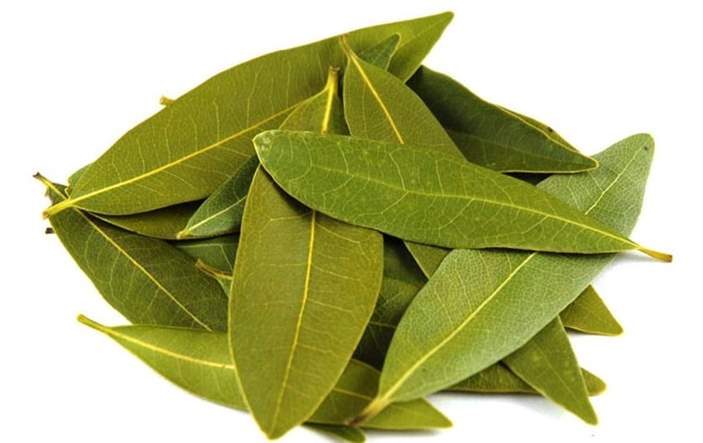Bay leaf is a term used to refer to several aromatic culinary herbs used as a whole (dry or fresh) or dried and grounded. They come in various colors, sizes, appearance, and their flavor or taste and fragrance may vary but often pungent with somewhat a sharp and bitter taste.
In most cases, bay leaf often refers to Laurus nobilis (Laurel bay, sweet bag, bay tree, tree laurel, or laurel in the family Lauraceae. However, California bay leaf (Umbellularia californica, pepperwood, Oregon myrtle or California laurel), Indian bay leaf (Cinnamomum tamala or malabathrum) Mexican bay leaf (Litsea glaucescens) all in the family Lauraceae use the same name.

Finally, the term may also refer to Indonesian bay leaf (Syzygium polyanthum), West Indian bay leaf (Pimenta racemosa) of the family Myrtaceae.
Can rabbits eat bay leaves?
Yes. Bay leaves, and to be precise, Laurus nobilis is safe for rabbits in small amounts a once in a while snack. We know bay leaves are toxic to dogs, poisonous to cats, and harmful to horses. Also, there is scanty information on bay leaf safety or toxicity to rabbits.
However, our conclusion is based on two closely related studies where bunnies had supplemental of bay leaves in the rabbit diet. The first study is “Dietary effect of dried bay leaves (Laurus nobilis) meal on some biochemical parameters and plasma oxidative status in New Zealand white growing rabbits.”
The study concludes that dried bay leaves supplementation up to 1g/kg of feed improved lipid profile (cholesterol, monounsaturated and polyunsaturated fatty acids) without having any impact on rabbit’s meat oxidative markers and chemical traits. There was also a significant reduction in glycemic profile and liver enzymes.
A second study on “Effect of Bay leaf (Laurus nobilis L.) And it’s isolated (flavonoids and glycosides) on the lipids profile in the local Iraqi female rabbits,” they may be a vital agent in lowering hyperlipidemia.
A reduction was observed on LDC-C (low-density lipoprotein cholesterol), LDL (low-density lipoprotein), TC (triglyceride), TC (total cholesterol), VLDL-C (very low-density lipoprotein-cholesterol), and HDL (high-density lipoprotein).
While some people may attribute toxicity to rabbits, note the presence of eugenol and other essential oils makes this herb unsafe. However, rabbits eat basil, oregano, and other herbs that are equally high in these essential oils.
Finally, like most other aromatic herbs, bay leaf isn’t one of their most preferred food. Some bunnies may ignore it. However, most will nibble or eat it.
Are bay leaves good?
We have already noted some benefits, especially in reducing blood sugar and managing hyperlipidemia (abnormally high lipids and fats in the blood).
Additionally, bay leave is rich in flavonols, phenols, and flavones, and other antioxidants vital in neutralizing some free radicals, strengthening immunity, fighting against some disease, and so on.
More
Many cuisines, including the Indian, European, American, Philippines as well as some classic French dishes, use bay leaf. While it is safe and not toxic to humans, its stiffness, even with thoroughly cooking, makes it not eaten. Most recipes will recommend its removal once done cooking.
Besides culinary use, this herb may help repel flies, cockroaches, mice, and moths. Also, young crushed leaves have an application in entomology, killing jars as its vapor kills insects.
Finally, the leaves have about 1.3% ol. lauri folii essential oil, which predominantly has eucalyptol (45%), 12% other terpenes, sesquiterpenes (3-4%), methyleugenol (3%) and among others.
Toxic plants confused for bay leaves
The notion that bay leaf is toxic may unrelated plants that share a similar name or bear some a close resemblance. These unrelated plants are:
- Cherry laurel, English, or common laurel (Prunus laurocerasus), an evergreen cherry belonging to the genus Prunus are toxic to livestock and humans.
- Mountain laurel, calico-bush, spoonwood (Kalmia latifolia) is also toxic to deer, rabbits, goats, horses, cattle, humans, and monkeys since it has grayanotoxins.
Conclusion
Unless you can distinguish between Laurus nobilis and other plants with similar appearance and name, don’t give them to your bunnies.
